Search
Search Results
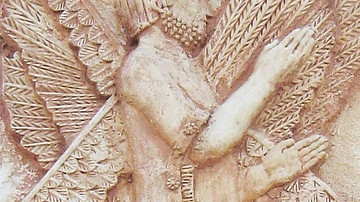
Definition
Cyrus the Great
Cyrus II (d. 530 BCE), also known as Cyrus the Great, was the fourth king of Anshan and the first king of the Achaemenid Empire. Cyrus led several military campaigns against the most powerful kingdoms of the time, including Media, Lydia...
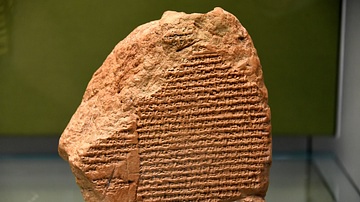
Image
Nabonidus Chronicle
The fall of a dynasty! Nabonidus' faults and absence were recorded alongside events of his reign. By the autumn of 539 BCE,, Babylon has surrendered to the army of king Cyrus to become part of the growing Achaemenid Empire. From Babylon...
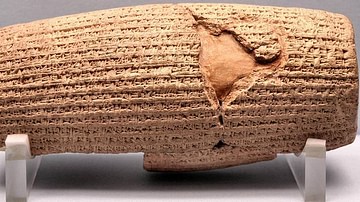
Article
The Cyrus Cylinder
The Cyrus Cylinder is a document issued by Cyrus the Great, consisting of a cylinder of clay inscribed in Akkadian cuneiform script. The cylinder was created in 539 BCE, surely by order of Cyrus the Great, when he took Babylon from Nabonidus...
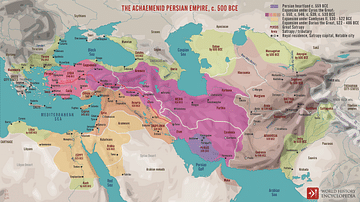
Definition
Achaemenid Empire
East of the Zagros Mountains, a high plateau stretches off towards India. While Egypt was rising up against the Hyksos, a wave of pastoral tribes from north of the Caspian Sea was drifting down into this area and across into India. By the...
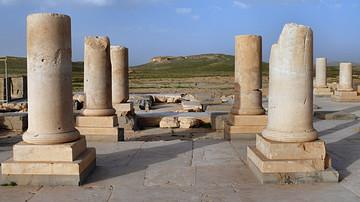
Definition
Pasargadae
Pasargadae was one of the oldest residences of the Achaemenid kings, founded by Cyrus the Great (r.559-530). It resembled a park of 2x3 km in which several monumental buildings were to be seen. According to the Roman geographer Strabo of...
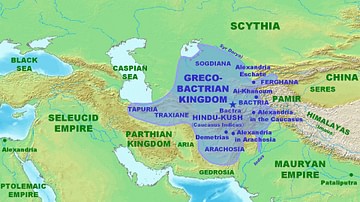
Article
Greco-Bactrian and Indo-Greek Kingdoms in Ancient Texts
The rarity of the appearance of Greco-Bactrian and Indo-Greek kingdoms in ancient literature is one of the reasons why those states are so little-known today. Indo-Greek literature did exist, but none has been found that speaks about the...
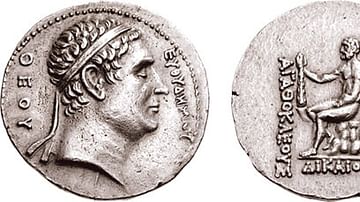
Article
Some new hypotheses on the problems of the Indo-Greek kingdoms
Warning: See the definitions of Greco-Bactrian and Indo-Greek Kingdoms before reading this article, otherwise the following lines could give you serious headaches! A lack of information is a common problem for historians of the Greco-Bactrian...
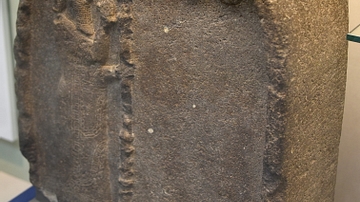
Image
Stela of Nabonidus
Here, Nabonidus (reigned 556-539 BCE) wears the traditional dress of a Babylonian king, holding objects symbolizing justice and power. Before him are the star of Ishtar, the winged-disc of Shamash, and the crescent moon god Sin, to whom Nabonidus...
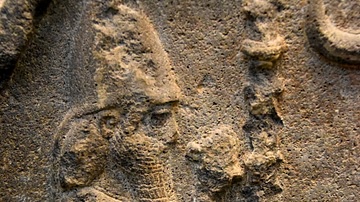
Image
The Babylonian King Nabonidus
This is a detail of a Babylonian basalt stele. Here the figure of the king, Nabonidus was carved in relief on the obverse side of the stele. The king stands and wears a conical headdress as well as a long fringed garment. The right hand is...
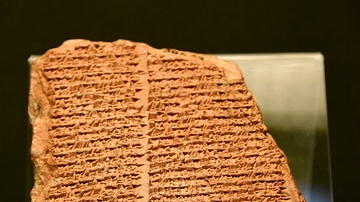
Image
Verse Account of King Nabonidus
"He looks at those effigies and utters blasphemes...". During the reign of Nabonidus (556-539 BCE), Babylon fell to the Persian king Cyrus the Great. Nabonidus' reign was a troubled one. His unpopularity led to this poem, ridiculing Nabonidus...